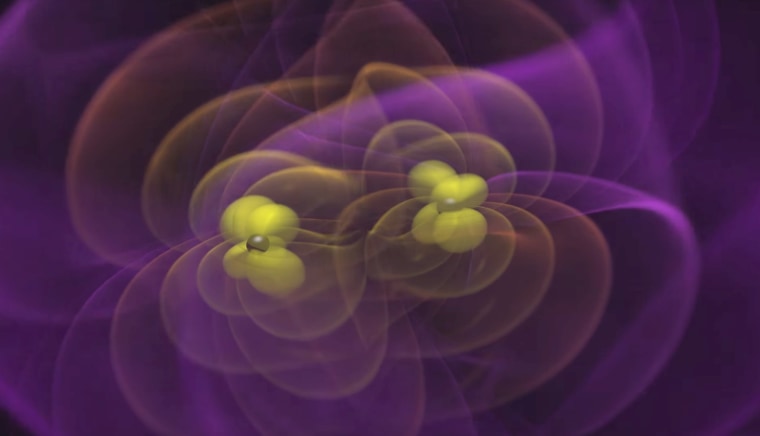When black holes collide, do they hide in the dark or emit flashes of light?
That question is up the air after an Earth-based detector spotted gravitational waves, or ripples in the fabric of space-time, created by two black holes merging together. Previous theoretical and observational work suggested that for black holes of this size — about 30 times the mass of the sun — there would be no bright flash, no hazy glow, no light to speak of.
Read More: Gravitational Waves: Ripples in Space-Time Detected for First Time
But in September 2015, NASA's Fermi Gamma-ray Space Telescope saw a faint burst of high-energy light less than 1 second after the black holes had collided, and in the same region of the sky, researchers announced on Monday. The chances are good that the gamma-ray light did indeed come from the black-hole merger, but more evidence is needed to nail that conclusion down, scientists said.
"This is a tantalizing discovery with a low chance of being a false alarm, but before we can start rewriting the textbooks, we'll need to see more bursts associated with gravitational waves from black hole mergers," study lead author Valerie Connaughton, of the National Space, Science and Technology Center in Huntsville, Alabama, said in a statement.
In February, a collaboration of scientists working at the Laser Interferometer Gravitational-Wave Observatory made history when they announced the first-ever direct detection of gravitational waves, which were first predicted by Albert Einstein a century ago. Up until that detection, scientists had obtained only indirect evidence of these ripples' existence.
Read More: Astronomers Detect Visible Light from Black Hole for First Time
The LIGO team determined the waves it had detected came from two black holes, 29 and 36 times the mass of the sun, merging together. Researchers generally didn't expect to see any light coming from this event.
Black holes themselves don't radiate light, but the fast-moving material spiraling into black holes often does. (In fact, monster black holes at the centers of galaxies can cause matter around them to radiate so much light that they become some of the brightest objects in the universe.) However, merging black holes circle each other for millions of years, so scientists had expected that any gas or other nearby light-generating debris would be cleared away long before the duo actually collided.
Follow Calla Cofield @callacofield. Follow us @Spacedotcom, Facebook and Google+. This is a condensed version of a story that originally appeared on Space.com. Read the full article here.
